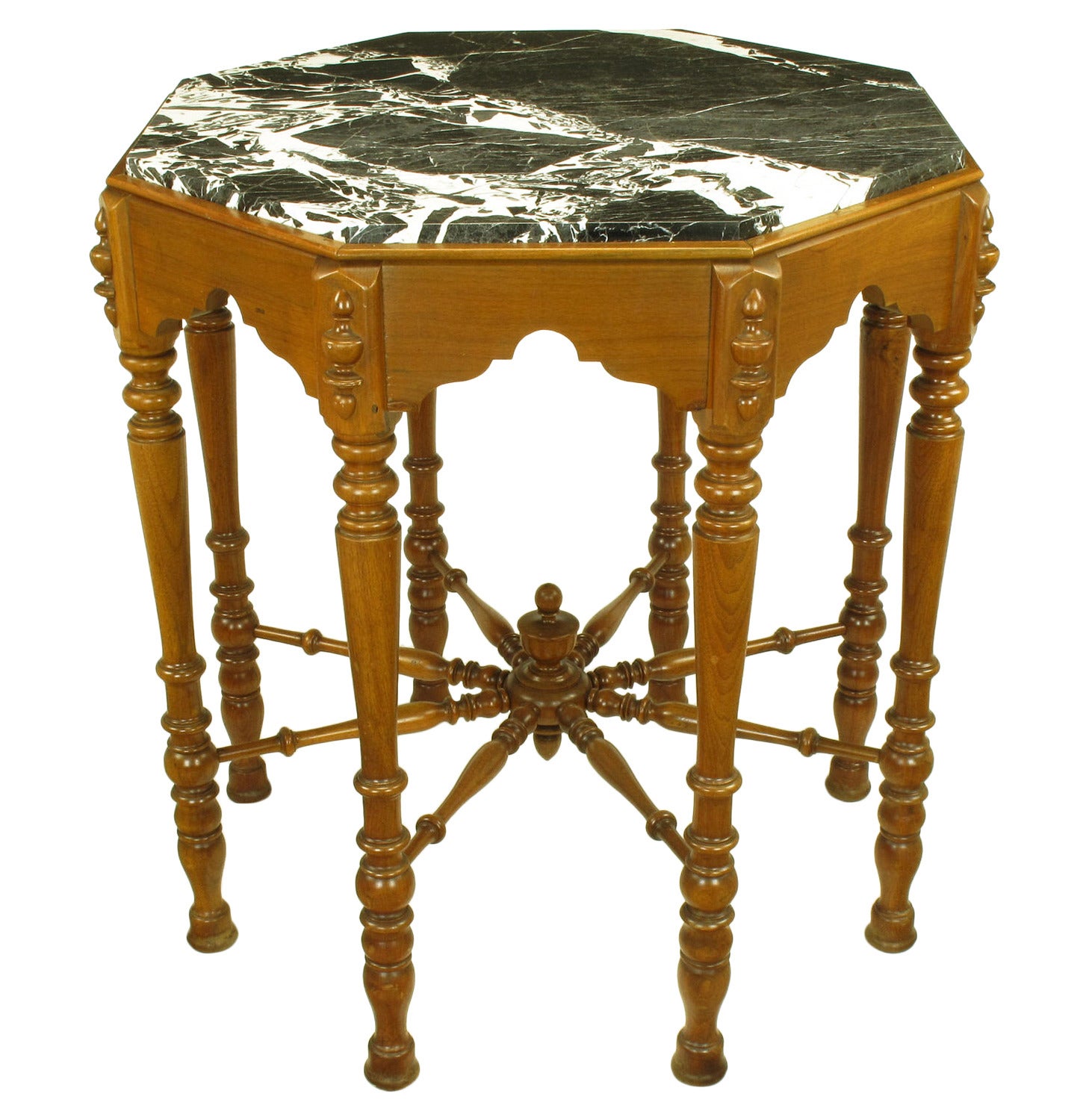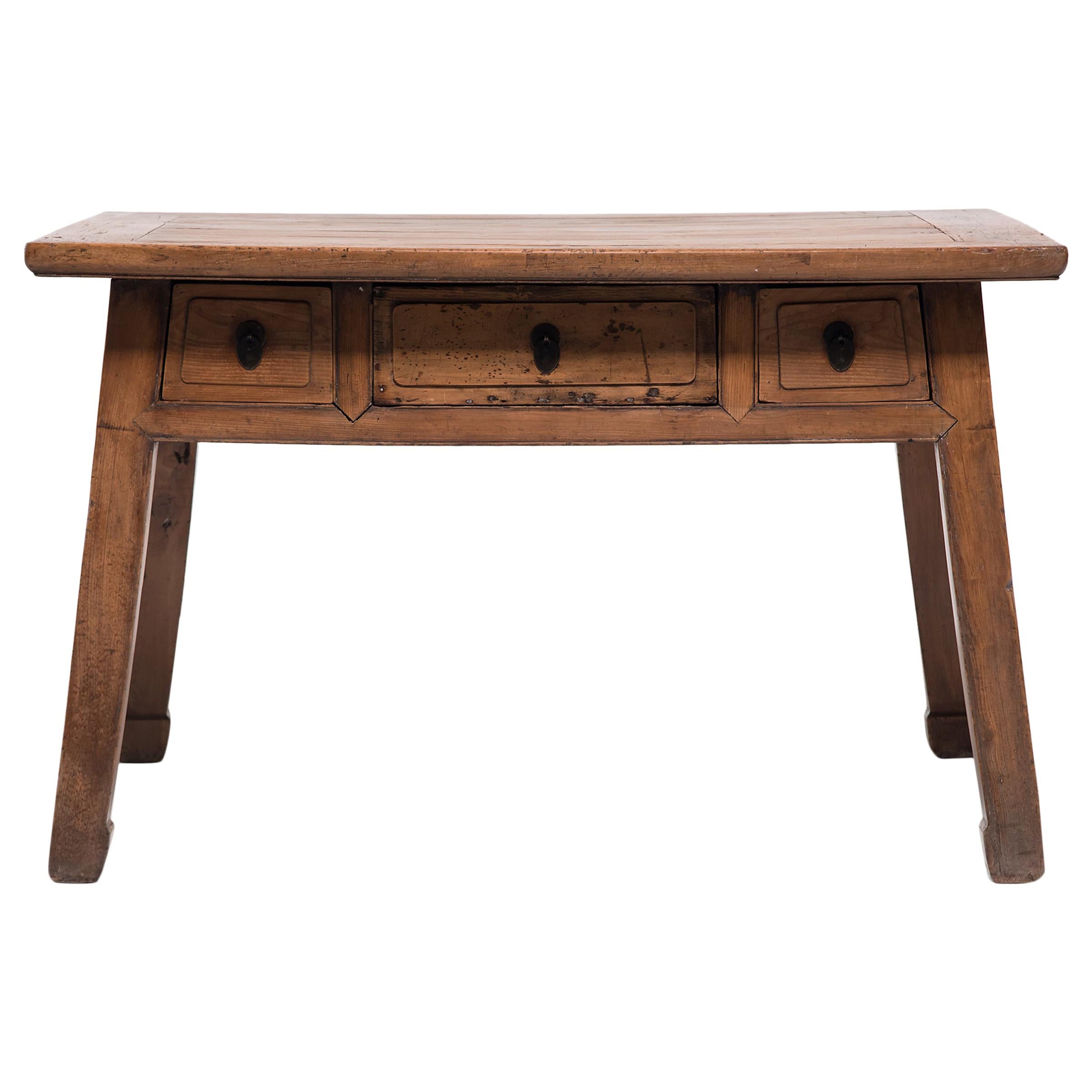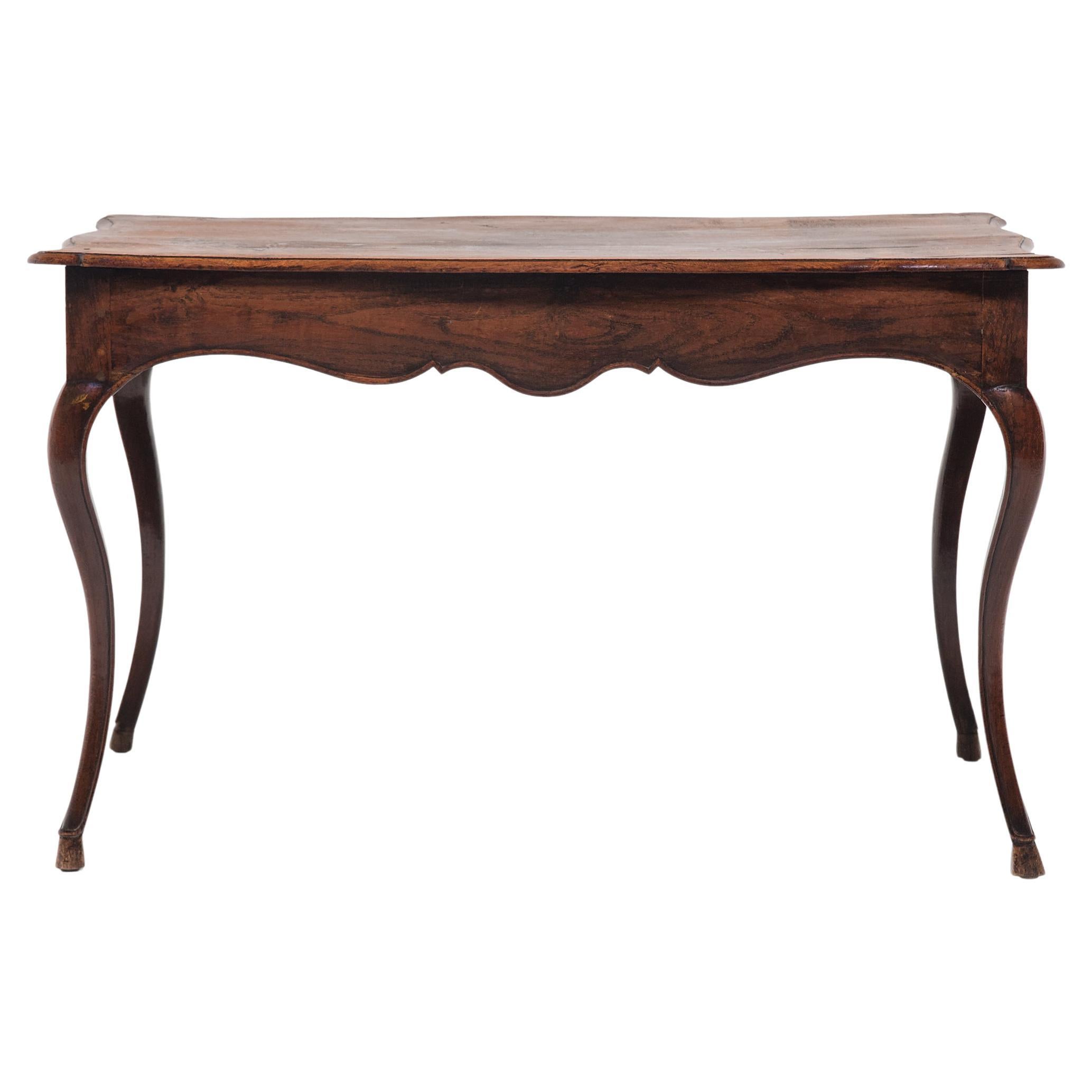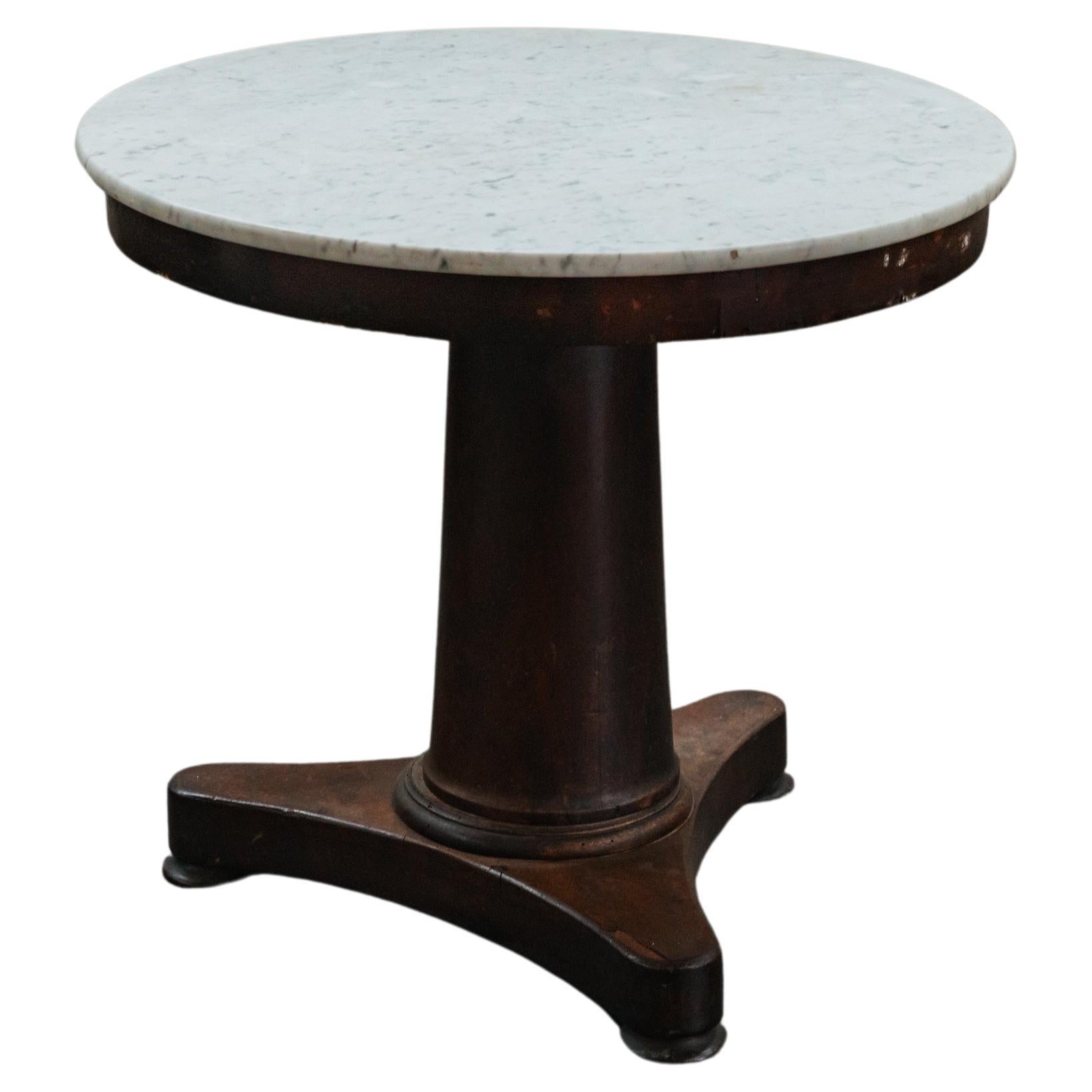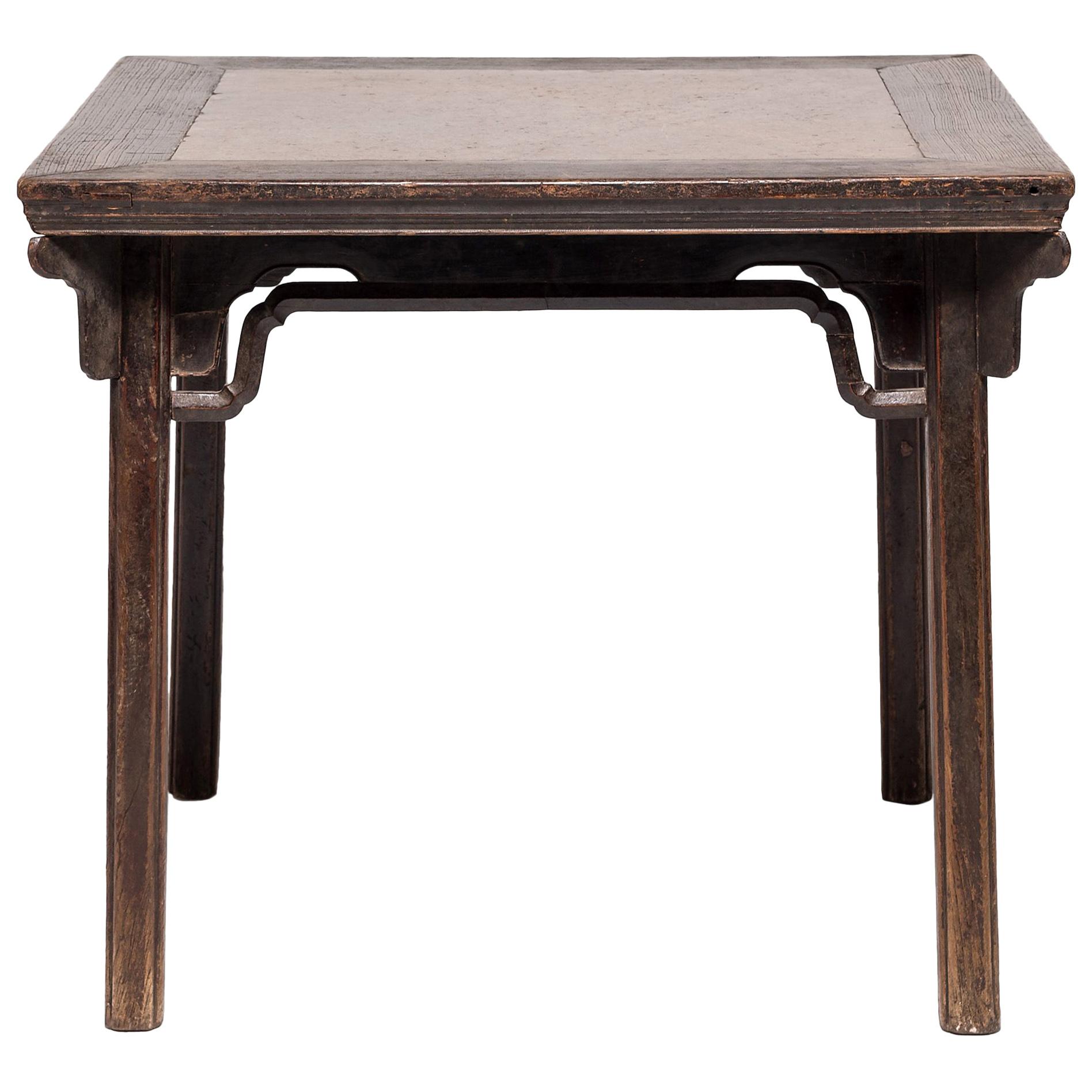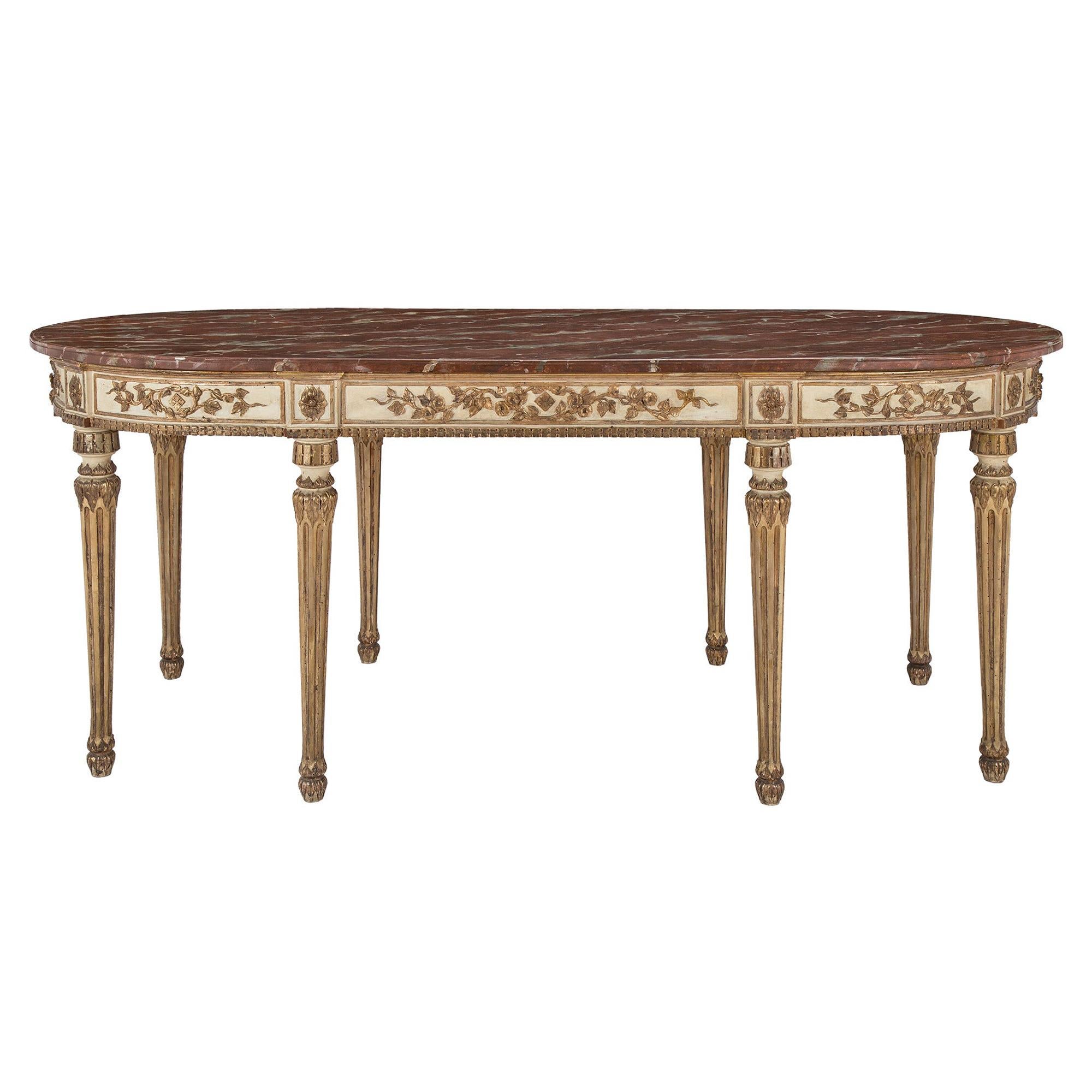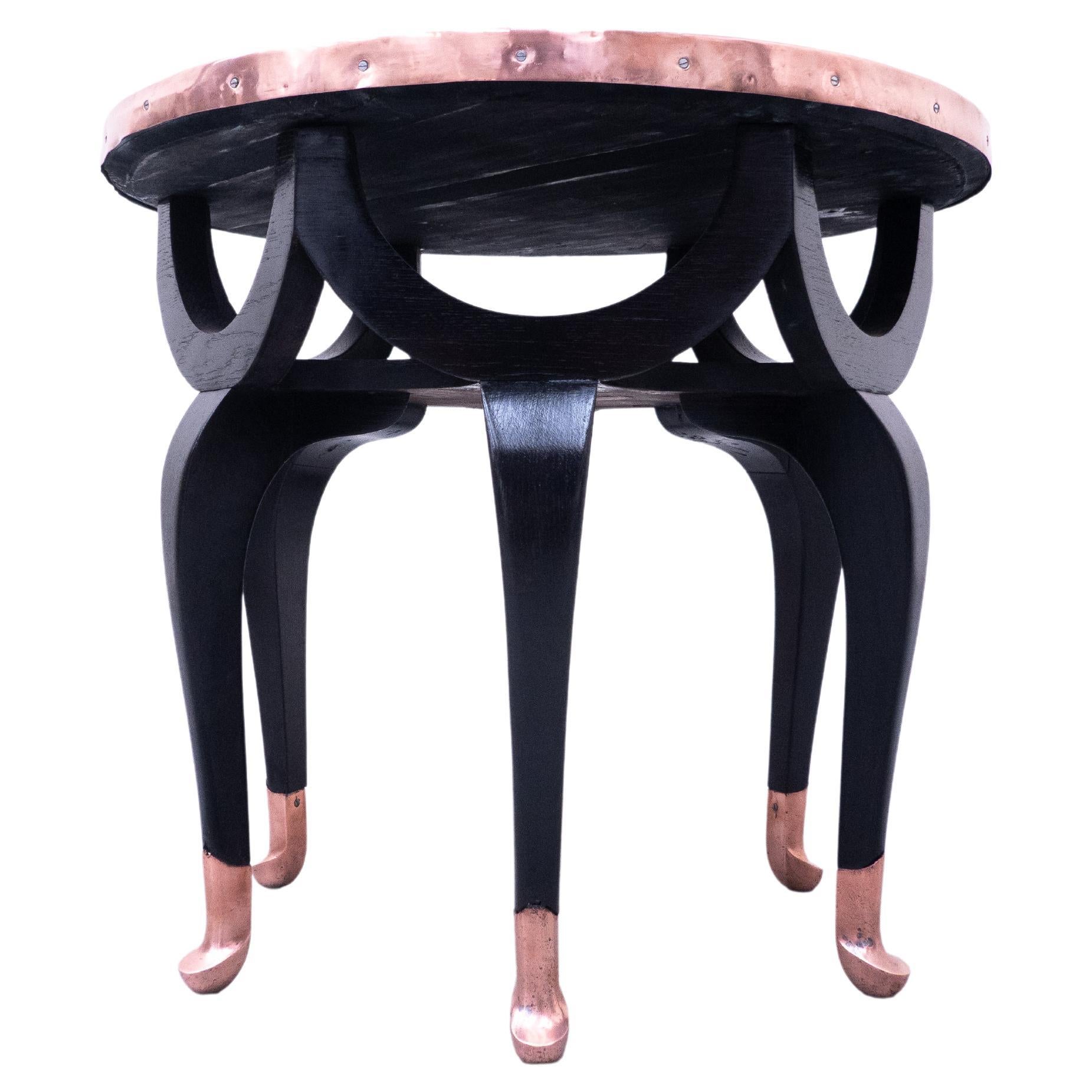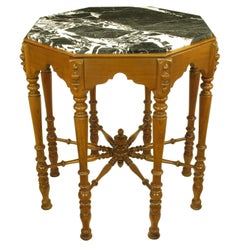
Eight-Leg Elephant Trunk Table, circa 1900
View Similar Items
1 of 1
Eight-Leg Elephant Trunk Table, circa 1900
About the Item
- Creator:Max Schmidt (Manufacturer),Adolf Loos (Artist)
- Dimensions:Height: 25.79 in (65.5 cm)Diameter: 37.41 in (95 cm)
- Style:Jugendstil (Of the Period)
- Materials and Techniques:
- Period:1900-1909
- Date of Manufacture:ca. 1900
- Condition:Wear consistent with age and use.
- Seller Location:Vienna, AT
- Reference Number:1stDibs: LU98251947282
You May Also Like
- Eight-Leg Walnut and Marble Eastlake Center TableLocated in Chicago, ILWalnut Eastlake/ Victorian transitional center table or side table with octagonal black and white marble top and eight carved baluster style ...Category
Vintage 1920s American Center Tables
MaterialsMarble
- Round Oak Table, circa 1900Located in Evergreen, COEight turned legs with ball feet are gracefully connected by carved, ached stretchers, providing stylish support to this round table. The apron beneath the tables carved and beveled ...Category
Early 20th Century Belgian Center Tables
MaterialsOak
- Chinese Splayed Leg Cypress Table, circa 1850Located in Chicago, ILThough crafted in the mid-19th century, this three drawer center table embodies the style of farmhouse modern with clean lines and the natural warmth of cypress timbers. Constructed ...Category
Antique Mid-19th Century Chinese Qing Center Tables
MaterialsCypress
- French Louis XV-Style Tea Table with Cabriole Legs, c. 1900Located in Chicago, ILCrafted in France in the late 19th century, this refined Louis XV-style side table boasts a timeless, lightweight design defined by delicate cabriole legs ending in square hoof feet....Category
Antique Late 19th Century French Louis XV Center Tables
MaterialsOak
- French Art Nouveau Two Tiered Painted Top Center Table, Circa 1900Located in CHFrench Art Nouveau two tiered painted top center table, Circa 1900.Category
Early 20th Century French Art Nouveau Center Tables
MaterialsWood
- Important and Rare Original circa 1900 Carlo Bugatti Occasional Table EbonizedBy Carlo BugattiLocated in GBWe are delighted to offer for sale this exceptionally rare and important original circa 1900 Carlo Bugatti occasional table This table is special, designed by Carlo Bugatti, Italy around 1900, it’s a rectangular walnut occasional or centre table, partly ebonized, with floral inlays made of pewter, the legs partially covered with copper sheet, the tabletop covered with goatskin, this table was exhibited at the Musee d'Orsay, Paris, 2001 Carlo Bugatti (2 February 1856-April 1940) was an Italian decorator, designer and manufacturer of Art Nouveau furniture, models of jewelry, and musical instruments. Bugatti was born 2 February 1856 in Milan, in what would remain until 1859 the kingdom of Lombardy: he died in Molsheim, France. Biography: Son of Giovanni Luigi Bugatti, a specialist in interior decoration, Carlo studied firstly at the Brera Academy in Milan, and subsequently, from 1875, at the Académie des Beaux Arts in Paris. In 1880 he started to manufacture furniture in Milan, later transferring to France. From 1888 he began to be successful beyond Italy. Nevertheless, till 1904 he maintained a Milan workshop in the city's Via Castelfiardo 6. He was also, like his father, trained as an architect, but there is no evidence that any of his architectural designs were ever executed. He triumphed at the exhibition of decorative art in Turin in 1902 and returned to Paris in 1904. Father of sculptor Rembrandt Bugatti and automobile manufacturer Ettore Bugatti, he moved in 1910 to Pierrefonds where he established an atelier. From 1914-1918 he was nominated mayor of the village, and the outspoken anti-German industrialist Adolphe Clément-Bayard, who lived at the Domaine du Bois d'Aucourt, entrusted its upkeep to him. From then on, he devoted himself entirely to painting. After the suicide of his son Rembrandt in 1916, Bugatti, then 60, produced less, but he remained influential. In 1935, at the age of 79, he retired near his son Ettore's family in Alsace. He settled in a flat north of Château Saint-Jean, Dorlisheim, with his wife Teresa (who died shortly afterwards), at the domain of promotion of Bugatti property of his son Ettore. He spent his last months at his apartment at the Bugatti factory in Molsheim, where he frequented the workmen and the house of 'the Hardtmühle', living with Ettore and his family. In April 1940, he died at the hospital in Molsheim. He is buried in the Bugatti family cemetery at Dorlisheim. The Bugatti section of Molsheim's municipal Musée de la Chartreuse displays...Category
Antique Early 1900s Italian Art Nouveau Center Tables
MaterialsGoatskin, Walnut
Recently Viewed
View AllMore Ways To Browse
Antique Elephant Table
Antique Elephant Tables
Austrian Oak Table
Brass Elephant Table
Antique Loo Table
Elephant Leg Table
Red Marble Oak
Jugendstil Oak
Brass Elephant Antique
Antique Brass Elephant
Elephant Trunk Table
Moderne Inlay
Adolf Loos Jugendstil
Dior Trunk
Loos Stone
Tripod Center Table
Centre Table English
Brass And Marble Center Table
